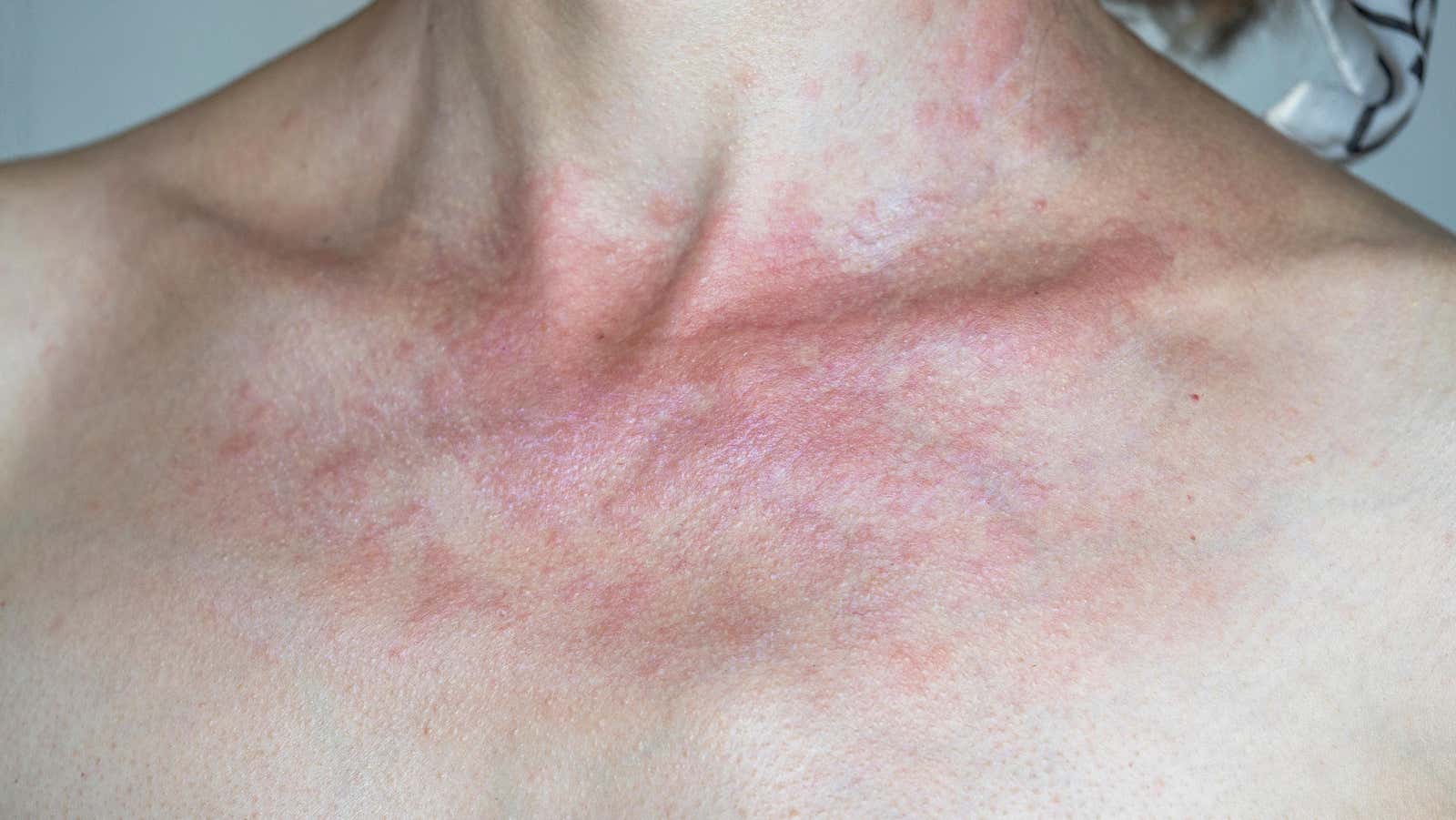Your Rash Could Be an Allergy to the Sun

Despite all the good it does for us, the sun can also be a threat: it can burn your skin , ruin your eyes , and even damage your car . It could also be the cause of that rash you’ve been looking for on Google ever since you found it on your shoulders. You can have a “sun rash” or “sun allergy” without even knowing it, so let’s find out what it is and what you can do about it.
What is sun allergy?
According to the Mayo Clinic , the term “sun allergy” can be used to describe a variety of conditions, but it usually refers to any itchy, red rash that appears on the skin after sun exposure. A tendency to be allergic to the sun can be hereditary or occur unexpectedly due to external factors such as medications or exposure to certain plants such as giant hogweed , wild parsnips, or limes. Antibiotics, antifungals, antihistamines, cholesterol medications, diuretics, hormones (such as birth control), non-steroidal anti-inflammatory drugs, and retinoids may, for example, increase the risk of a photoallergic reaction.
The most common type of sun allergy is polymorphic light rash, which is also called “sun poisoning”. The Cleveland Clinic identifies actinic pruritus, photoallergic reaction, and solar urticaria as other types. Signs of a sun allergy vary depending on what’s really causing the problem, but in general, watch out for them:
- Redness
- Itching
- Pain
- Small bumps that can become raised spots
- Scaling, crusting, or bleeding
- Blisters or hives
- Oozing
- Swelling
- Tingling or burning
You’re more likely to see these symptoms on sun-exposed skin, so if you see bumps or crusts on your arms, but not where a swimsuit or T-shirt would normally cover them, it’s a hint that you’re dealing with an allergy to sun. Expect symptoms to appear within minutes to hours of sun exposure.
For the most part, this should go away on its own, but if your skin reaction is “unusual” or “obtrusive,” according to Mayo, see a doctor, especially a dermatologist. You may need steroid creams or tablets. In rare cases, according to the Cleveland Clinic, sun allergies can cause systemic symptoms such as headache, dizziness, fainting, nausea, vomiting, wheezing, or anaphylaxis. If you experience these symptoms, see your doctor.
How to prevent sun allergies
Check with your doctor if any medication you are taking may contribute to your tendency to develop skin reactions after sun exposure. Chemicals and medical conditions can also affect this, so if you have any cosmetic treatment, procedure, or condition, check with the professionals you work with about any adverse sun reactions you might expect. According to Mayo, substances in fragrances, disinfectants, and even some chemicals in sunscreen can cause skin allergy symptoms when your skin is exposed to them and then to sunlight.
Also keep in mind that while anyone can be allergic to the sun, some types are more common in fair-skinned people. If you have dermatitis, you are also at increased risk of sun allergy, and the same is true if you have blood relatives who are allergic to the sun.
Avoid sun allergies by doing the following:
- Try not to be in the sun from 10:00 to 16:00.
- Gradually increase the amount of time you spend outdoors instead of exposing your skin cells to sudden exposure.
- Wear sunglasses .
- Wear protective clothing such as long-sleeved shirts and wide-brimmed hats.
- Use sunscreen .
- Avoid any triggers you know.
What to do if you encounter an episode
You probably don’t even want to think about the words “pee”, “crust”, “swell” or “blister” when you’re planning your next beach outfit. However, it can happen, and if it does, you should get out of the sun as soon as you notice. Place a cool, damp cloth over the affected areas, drink plenty of water, and take an over-the-counter antihistamine to help manage symptoms.